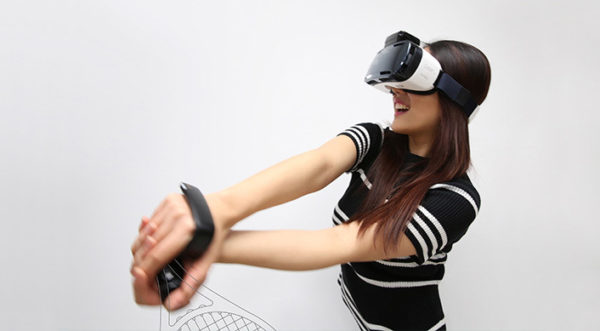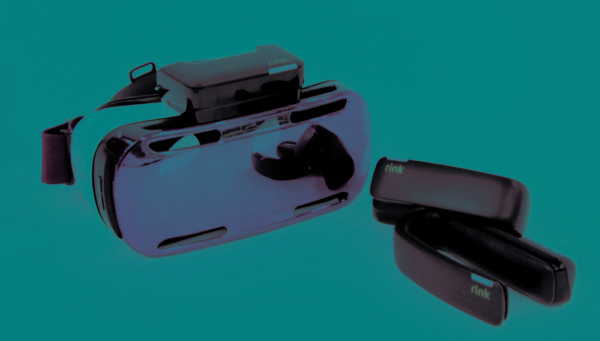Samsung Reveals “Rink”, A Motion Controller For the Gear VR

In Samsung’s C-Lab, a team of six people worked on a problem that haunts the Samsung Gear VR until this day – to have a fairly precise motion tracking system. Luckily, they’ve come very close to succeeding. In the Consumer Electronics Show (CES) 2016, the team presented their developed solution to the Gear VR’s problem: the Rink motion control system, stylized as “rink”. Rink brings full 360-degree hand movements and finger tracking to Samsung’s smartphone-based virtual reality platform. As a working prototype, the controller isn’t perfect but it does wonders for closing the gap between the most accessible VR headset on the market and higher-end models like the Oculus Rift and HTC Vive.
Samsung’s C-Lab incubator has been busy at CES 2016 showing off their latest experimental projects. Rink is one of these projects, along with a health monitoring belt and Tip Talk, which lets you hear calls and audio messages by pressing your finger to your ear.

Rink isn’t a consumer product right now. It’s a prototype from Samsung’s Creative Lab (C-Lab), which is an in-house incubator that lets company employees play with ambitious ideas and turn them into full-fledged startups. The set up requires a small unit on top of the Gear VR headset – Rink uses both infrared and a magnetic field for positional and 360 degree gesture tracking. It tracks most of your fingers with a good degree of precision. To interact with objects in the virtual world, you clench your fist up and set off a trigger in the process.
For now, the Rink is very much a work in progress which shows a lot of promise for Gear VR’s motion tracking. What’s great about Rink is that it brings a version of high end VR controls to a $99 headset which so far relies on head tracking, a touchpad and Bluetooth gamepads. But for something designed for a purposefully non-premium headset — one that costs only $100 — the Rink provides a major upgrade in immersion with a lot of developer potential. The team is referring to them as mobile VR controllers, which might give us a hint to the Rink as a possible third-party motion tracking accessory for other competing VR headsets as well, such as the Google Cardboard. Even in its prototype stage, Rink shows huge potential to become a full-fledged mainstream consumer product which will benefit mobile VR users.
For more information on Samsung Rink, please visit the following websites:
http://news.samsung.com/global/samsung-to-showcase-three-creative-lab-projects-for-the-first-time-at-ces-2016
http://www.cnet.com/pictures/trying-the-rink-a-way-to-use-your-hands-in-samsungs-gear-vr-headset-pictures/
https://www.wareable.com/vr/rink-samsung-gear-vr-controllers-review

